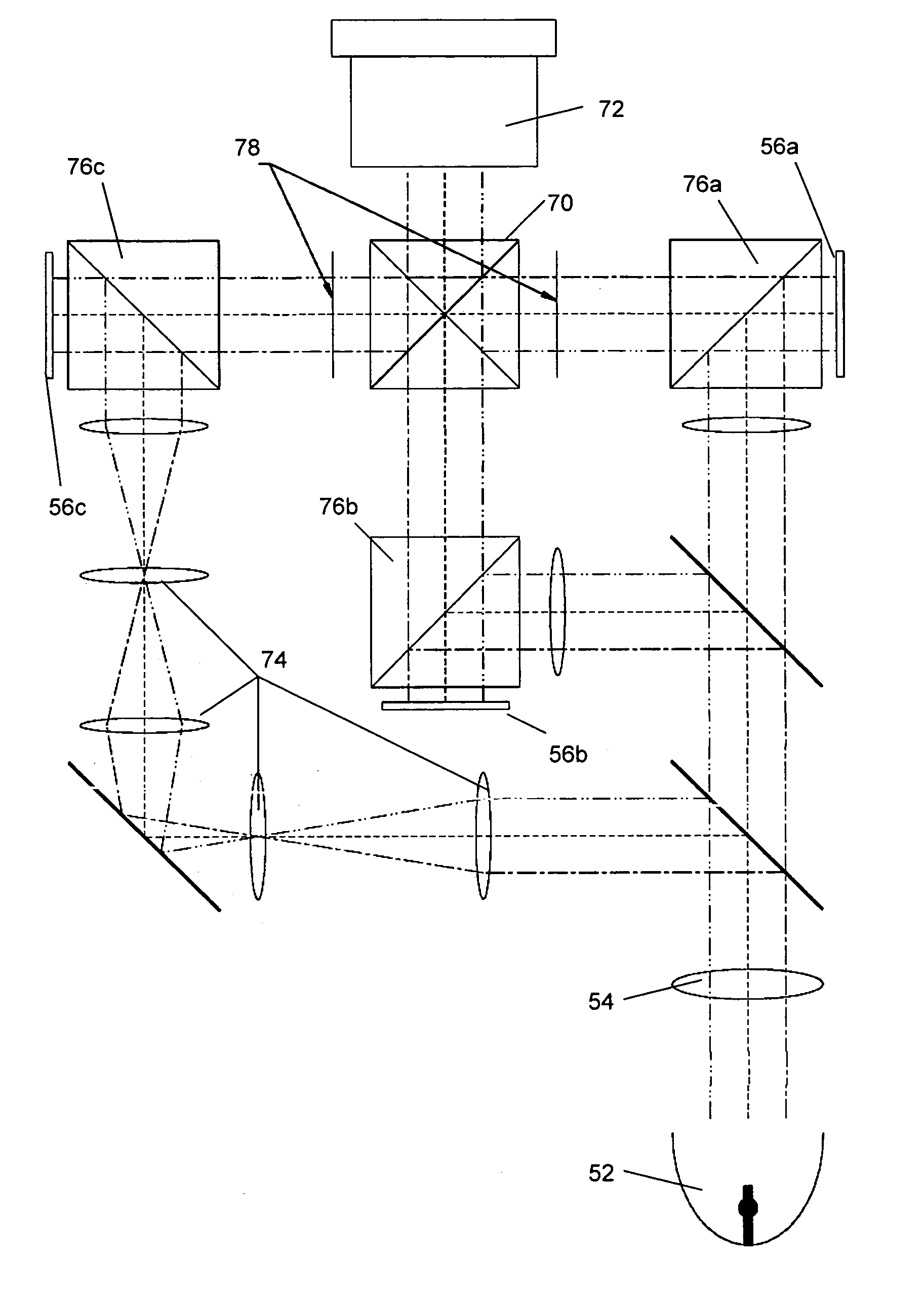Optical arrangement for non-inverting illumination system
a non-inverting, illumination system technology, applied in the field of optical systems, can solve the problems of color shift and light intensity of the different colors, system is relatively complex compared to conventional three imager parallel color, and additional problems, so as to avoid or avoid the influence of small flatness errors, the effect of reducing the chance of errors
- Summary
- Abstract
- Description
- Claims
- Application Information
AI Technical Summary
Benefits of technology
Problems solved by technology
Method used
Image
Examples
second embodiment
[0052] In FIG. 4 a schematic representation of an optical system for a projection system 100 according to the present invention is shown. The projection system comprises a light source 52, a number of optical components, a number of light modulating means 56 for forming an image for a corresponding number of color subbeams which are created, an X-cube 70 for recombining the color subbeams and a projection lens 72 for projecting the images on a screen. According to the present invention, the images of the color subbeams projected onto the light modulating means 56 have the same magnification and the same orientation. The differences in magnification between the sizes of the different color images are preferably smaller than 5%, more preferably smaller than 1%, most preferably smaller than 0.5%. In this embodiment, this is performed by providing equal light paths for all color subbeams. With equal light paths, it is meant that the distances between the imaging lens or imaging lenses a...
first embodiment
[0060] Additionally, the discoloration, i.e. the inhomogeneity in color or color shifts, on the screen also can be reduced further by taking into account the number of mirrors that are used for each of the color beams. As discussed in the first embodiment and shown in FIG. 3, the color inhomogeneities can be further reduced if the number of mirroring parts for each of the colors is all even or all odd. Also the mirror in the X-cube has to be taken into account. The distance between the color coordinates of a point left and a point right of an image that in principle displays one color, i.e. the image left-right color shift, for a system providing equal path lengths according to the present embodiment of the invention, is 0.0064. This is less than half the left-right color shift of a conventional system (0.013). This is also shown in Table 1.
[0061] It is a specific advantage of the current invention that in a non inverting illumination system, which may also include double inversion,...
PUM
 Login to View More
Login to View More Abstract
Description
Claims
Application Information
 Login to View More
Login to View More - R&D
- Intellectual Property
- Life Sciences
- Materials
- Tech Scout
- Unparalleled Data Quality
- Higher Quality Content
- 60% Fewer Hallucinations
Browse by: Latest US Patents, China's latest patents, Technical Efficacy Thesaurus, Application Domain, Technology Topic, Popular Technical Reports.
© 2025 PatSnap. All rights reserved.Legal|Privacy policy|Modern Slavery Act Transparency Statement|Sitemap|About US| Contact US: help@patsnap.com



